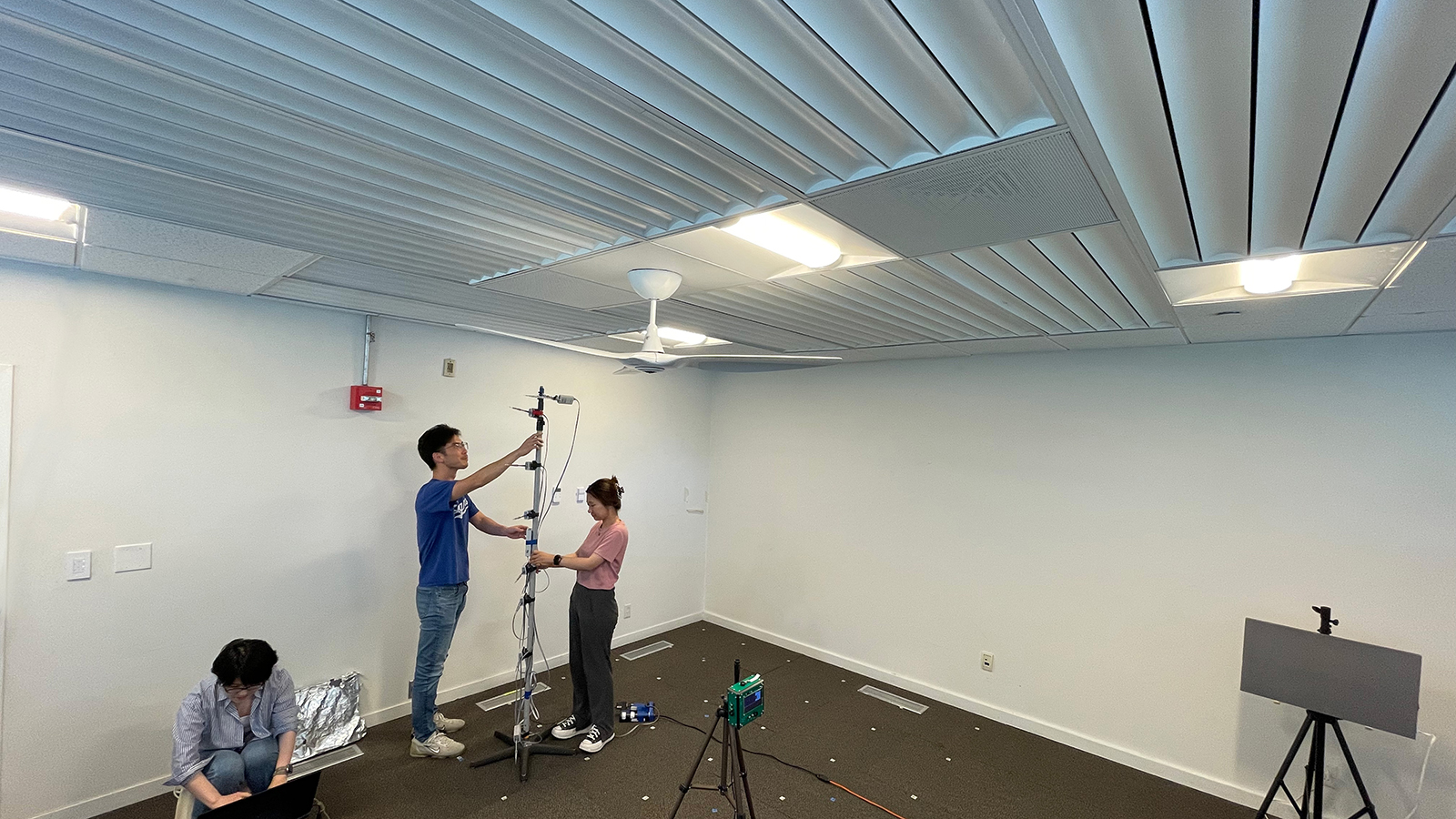Since opening in 1988, CBE’s controlled environment chamber has been used for research that has produced hundreds of journal papers, including keystone work related to human response, indoor environments and mechanical systems in buildings and automobile cabins. A major renovation was completed this fall, updating obsolete systems and failing equipment that was hindering important research operations. This milestone was commemorated last month, with a ribbon cutting ceremony held during a happy hour before CBE’s fall Industry Advisory Board meeting. Research Specialist Charlie Huizenga, who managed the project for CBE, gave a presentation on the chamber’s history and the upgrades. Attendees also learned a less familiar history, describing how the launch of this facility led to a noteworthy romance (more on that later). The upgrade design and construction administration were done by David Heinzerling of CBE Industry Partner Taylor Engineers.

(L to R) David Heinzerling of Taylor Engineers, CBE Director Edward Arens, and Ippei Izuhara of Sanken at the October ribbon cutting ceremony.
With its recent upgrade, the Berkeley facility is one of the most advanced test chambers of its type. The two external walls use a double wall design that allows conditioned air to be circulated behind the inside surface, so the temperature of the interior glass and walls can be controlled independently of the room temperature. Both the ceiling and underfloor spaces can be used as supply or return plenums. The upgrade added radiant ceiling panels, donated along with additional financial support by CBE Industry Partner Sanken, to create a new range of study capabilities. The upgrade also included a humidifier, control software from Automated Logic Corporation, and controllable LED lighting dimmable to one percent, with adjustable color temperature, fixture-integrated occupancy sensors and networked controls.
While the chamber was initially being constructed, the research team led by Fred Bauman learned about the evolving underfloor air distribution (UFAD) technology, and connected with Geno Brager, who was a supplier for Tate Access Floor and eventually donated the raised floor that was installed in the chamber. At the time, Prof. Gail (Schiller) Brager had recently begun her academic career at UC Berkeley’s Building Science Group, and met Geno for the first time literally inside the chamber. To make a long story short, they had an instant connection, and have now been happily married for over 30 years.
Romances aside, many of the early activities surrounding the chamber led to far-reaching research results. Tate Access Floor later became one of CBE’s founding industrial partners, and this collaboration led to studies in the chamber, plus field studies and simulations, that produced UFAD design tools and papers, and two editions of the UFAD Design Guide. A chamber-based dissertation study with human subjects by Hui Zhang led to seminal work on thermal comfort and the development of the Advanced Berkeley Comfort Model. The chamber has been used for studies on personal comfort devices, fans of all types, automotive cabin conditioning, window views and more.
With the renovation complete, CBE is excited to be embarking on a long list of planned experiments. A new study is underway on the effects of age and sex on thermal comfort, with support and participation of CBE Industry Partner Arup. We have also begun studies to improve our understanding of the design and operation of a convection-enhanced radiant panel used in combination with a dedicated outdoor air supply (DOAS) for heating and cooling, developed by Industry Partner Sanken. These are just a few examples of research that will take advantage of this upgraded facility, and we look forward using it while pursuing new directions in collaboration with CBE consortium members and with research affiliates here at UC Berkeley and further afield.
Photo at top: Research team members Ying Li, Akihisa Nomoto and Xue Zhai configure measurement equipment in the chamber.

